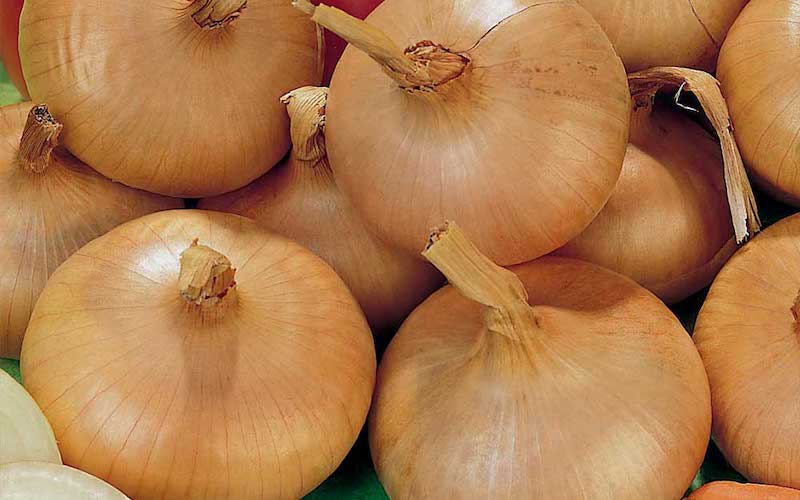Here’s your complete guide to growing onions. Whether you want to grow your own onion sets or sow onion seeds, we’ve got you covered. And for good measure, see our top tips on planting, harvesting and storing these flavour-packed and versatile vegetables.
Should you grow onions from seeds or sets?
While it’s easier to grow onions from sets, growing from seed is also a viable option. Growing this way takes a little time and effort but does give you many more varieties to choose from.
If growing from seed, begin in January to give your seedlings time to grow sufficiently for planting out in the spring. Sow your onion seeds into seed compost, spacing them a centimetre apart. Once the seeds have germinated, prick out the tiny seedlings and put them into fresh compost to give them room to grow, ready for transplanting into the garden in March and April.
If that sounds like a bit of a bother, go for onion sets. These are onions grown to a small size, which are then plucked and stored in a dormant state over the winter. They’re widely available and very convenient. You can buy spring planting onion sets or autumn planting onion sets, depending on which you prefer.
How to plant onions
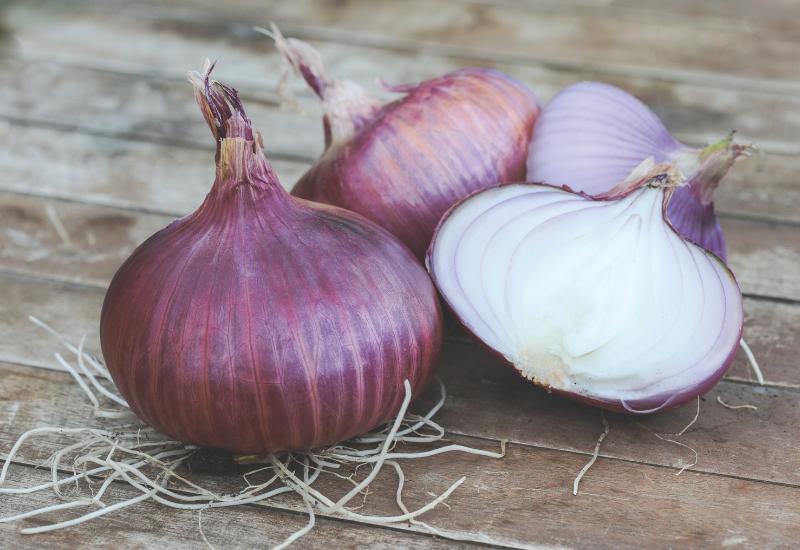
For a gloriously red onion to add colour and flavour, try ‘Red Baron’ sets
Image: Onion sets ‘Red Baron’ from Suttons
Choose a sheltered spot in the garden which receives full sun – onions need lots of sunlight to help them grow and swell.
Whether planting sets or seedlings, the guidelines are the same. First prepare the ground, adding a generous amount of compost or well-rotted manure to the soil and working it until it’s soft and friable. Well-drained, non-acidic soils are best for onions – waterlogging encourages fungus and rot.
Plant your sets or seedlings about 10-15 cm apart, leaving around one foot between rows. Just push the sets gently into the ground until only the very tips are showing. If you have the choice, smaller sets are actually better than larger ones which, because they’re more developed, tend to bolt sooner.
When planting onion seedlings, be sure to handle the fragile young plants with care. After planting, gently firm the soil around the roots, but not so much that you squash them.
Water your sets and seedlings using a fine rosette setting to avoid disturbing the soil. Prevent birds from disturbing them by covering with horticultural mesh until roots start to develop. Check nets regularly for trapped birds.
When to plant onions
Plant onion sets directly outdoors in either March and April or October and November. Autumn planted onions will be ready by the following summer; spring planted onions will be fully grown by late summer or early autumn.
Onions are quite hardy, so don’t worry too much about frost – if it’s going to be very cold, you should cover young plants with fleece or spread a couple of inches of mulch over them until the cold weather has passed, then uncover the young plants so they can carry on growing.
How to care for your onions
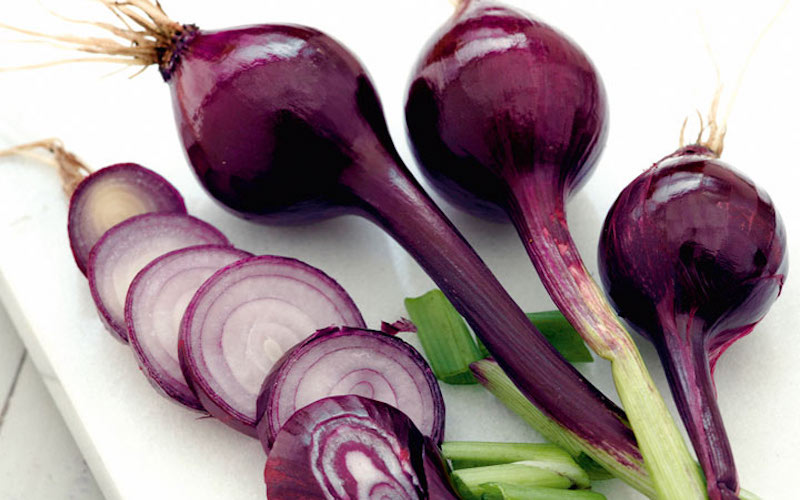
‘Purplette’ is a small variety suitable for growing in large containers
Image: Onion seeds ‘Purplette’ from Suttons
Onions do best when you keep them well weeded. It’s safest to do this by hand – onions have shallow roots and are easily disturbed if you accidentally knock them with the hoe. You should also water regularly, keeping the soil moist – but not sodden – especially during hot, dry spells.
Treat any overwintered onions to a feed with a nitrogen-based fertiliser in the early spring to get them off to a good start. Avoid feeding too late in the growing season because this encourages soft, fresh growth which won’t dry well and may stop your crop storing well.
When to harvest onions
You’ll know your onions are ready when the bulbs swell and the foliage yellows and droops. If you planted your sets in the autumn, they’ll be ready by early summer. Spring planted bulbs will ripen by late summer and into the early autumn.
Wait until nearly all the colour has left the leaves, then loosen the soil with a fork before pulling your bulbs. Before you store your onion crop, you’ll first need to make sure it’s properly dried.
How to store onions
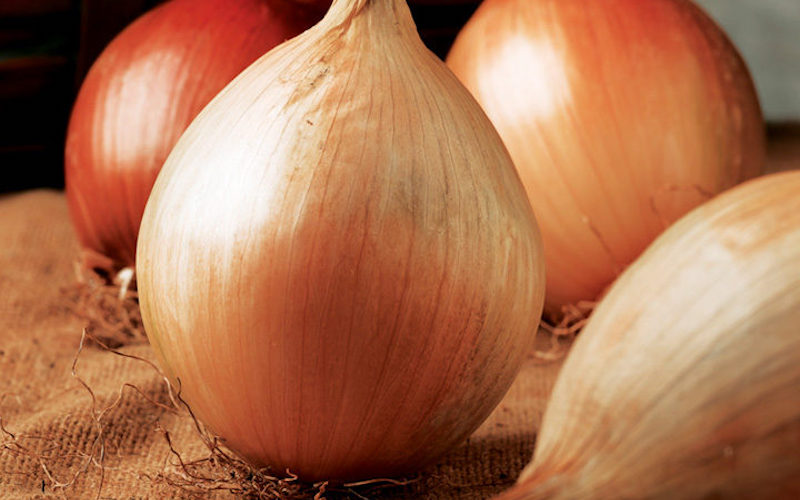
For competition-sized onions, sow ‘Ailsa Craig’ seeds
Image: Onion seeds ‘Ailsa Craig’ from Suttons
If the weather is dry and sunny, leave your onions outside until the skins have that crackly papery feel to them. If the weather isn’t so good, bring them into the shed or garage and either spread them on racks or place them on newspaper somewhere where there’s plenty of air flow. It generally takes a couple of weeks to properly prepare onions for winter storage.
To store your onions, you can plait the stems and hang them. Otherwise, trim the leaves and place individual onions on racks. Choose somewhere cool, dry, and dark. Use any bruised onions right away because these won’t store.
Best varieties of onion to grow from seed
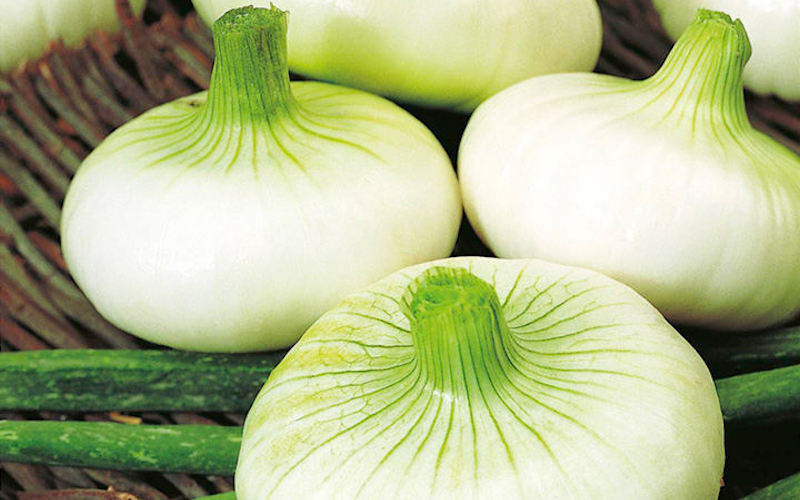
‘Borettana’ is heritage Italian onion that can be grown from seed
Image: Onion ‘Borettana’ seeds from Suttons (© Floramedia)
- Ailsa Craig – a favourite with competition growers, this onion is perfect for those who want large bulbs. For the biggest onions of all, sow Ailsa Craig in December and January ready for planting out in March.
- Purplette – a tasty little spring specimen with an attractive purple skin, purplette is easy to grow, making it a great choice for beginners. It also does well in containers, making it ideal for anyone packing a small space with lots of healthy produce.
- Onion Borettana – one for lovers of Mediterranean cuisine, Borettana is a heritage Italian onion with a flat bulb and a thin papery skin. It’s sweet and delicious and is perfect when braised and served as a side with fish or chicken. Alternatively, pickle it in sweet balsamic and enjoy it the Italian way.
Best varieties of onion to grow from sets
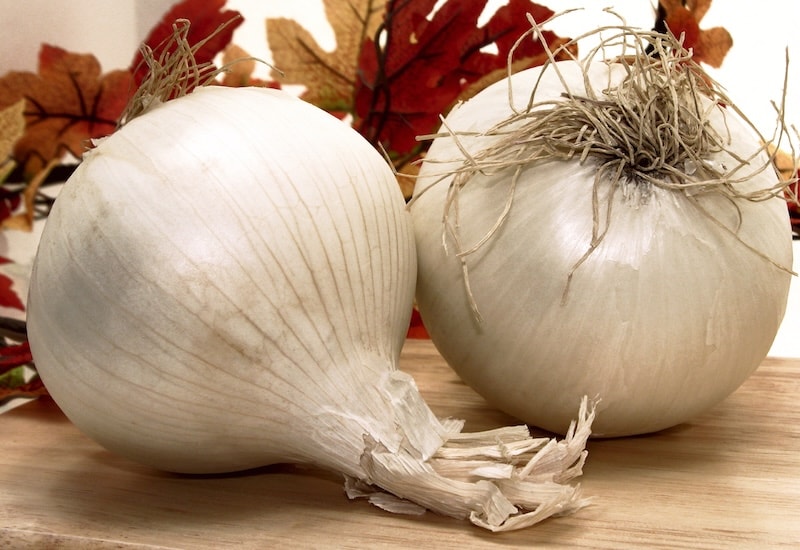
‘Snowball’ is a superb autumn-planting variety with bright white bulbs and flesh
Image: Onion ‘Snowball’ (Autumn Planting) from Suttons
- Corrado F1 – a uniform, golden-skinned onion with mild, firm flesh and excellent keeping quality, this variety is bolt resistant and reliably productive.
- Red Baron – a striking red onion with a punchy flavour, this variety offers a savoury kick and stores really well.
- Stuttgarter – a favourite with British gardeners, the Stuttgarter is a sweet, mild flavoured onion which you can plant early for harvesting in the early summer.
From ratatouille to curries and toad-in-the-hole, onions are one veg no cook can manage without. We hope our guide to growing onions gives you the know-how to have a go at growing your own delicious onions from set or from seed. See our article on how to stop onions from bolting for more growing advice.
Lead image: Onion ‘Stuttgarter’ from Suttons/Copyright: Floramedia
Last Updated on September 10, 2025 by Suttons Horticultural Team

